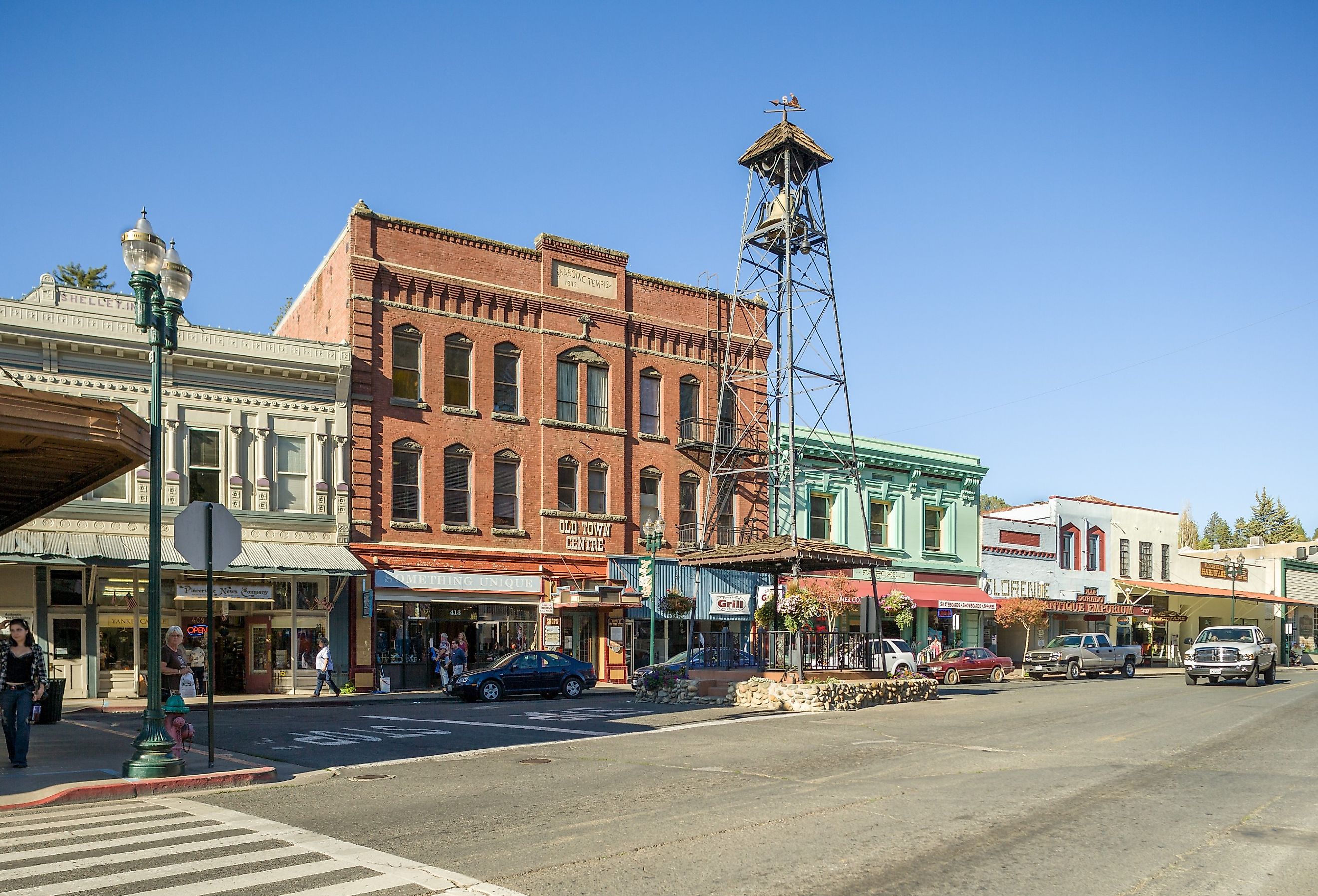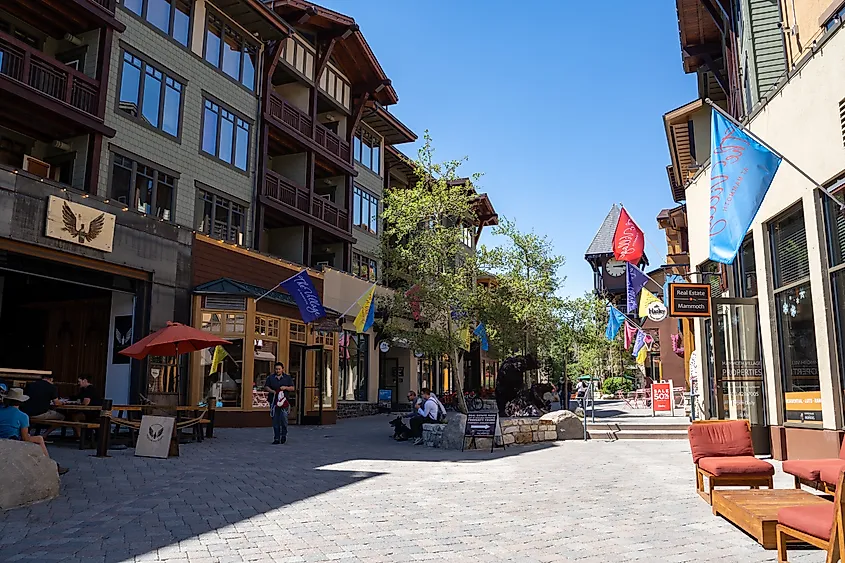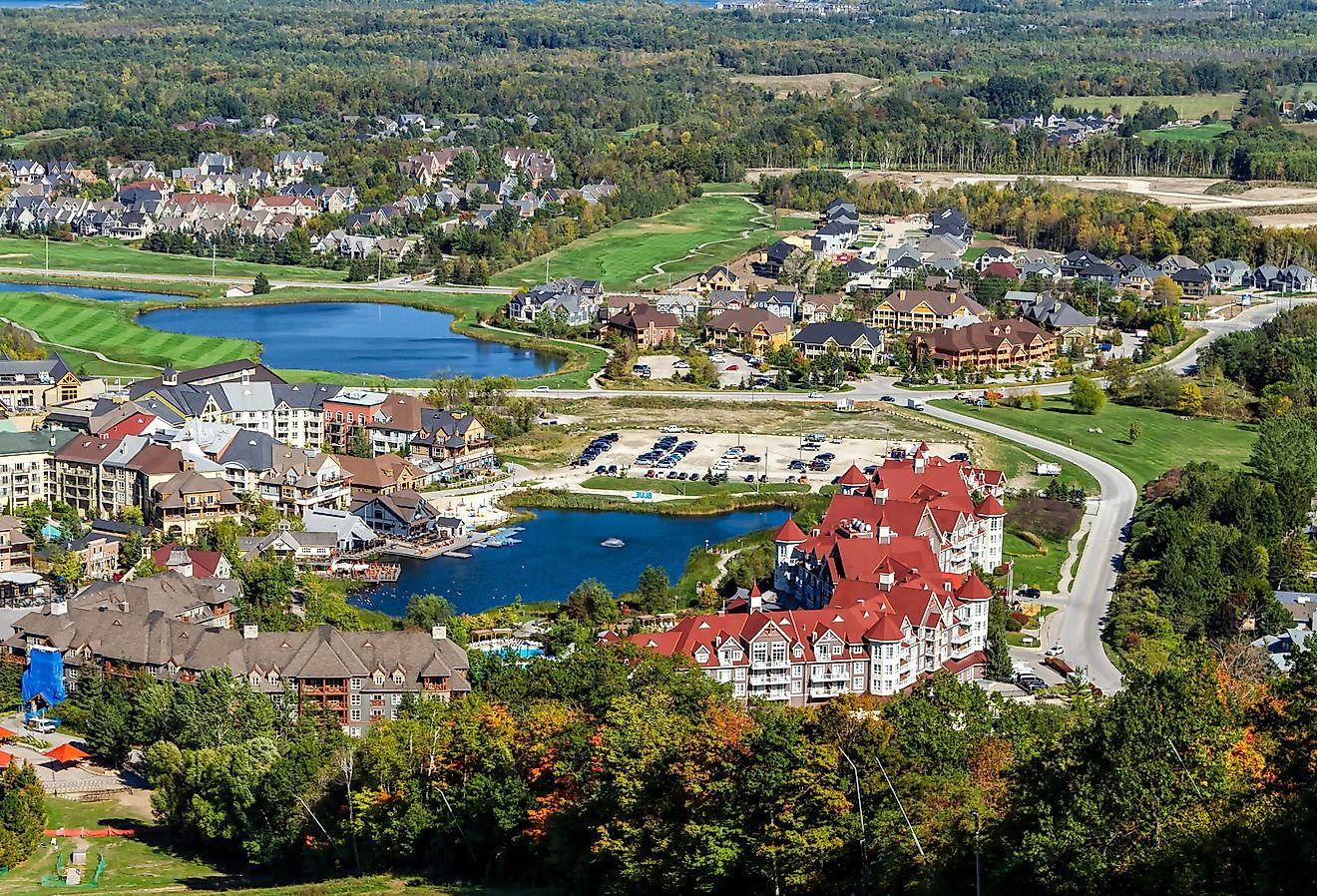
These 10 Towns in California's Sierra Nevada Have Beautiful Architecture
Calling all lovers of both history and the great outdoors, California’s Sierra Nevada awaits.
Stretching for hundreds of miles, this mountain range encompasses not just one but nearly half a dozen national parks, including Sequoia, Yosemite, and Kings Canyon. Criss-crossed by hiking trails, these parks make it easy to pull on your boots and get up close and personal with all the natural beauty.
For the architecture or history buff, Sierra Nevada offers a rich variety of towns with colorful histories, historic landmarks, and unique architecture. And it’s easy to see why: this area was in the very heart of the California Gold Rush of 1848. Hundreds of thousands came to find their fortune, and you can find the legacy of the boom towns that grew around them up and down the entire Sierra Nevada range.
So pack your bags and grab your camera. Discover ten towns in California’s Sierra Nevada waiting to welcome you with their natural beauty and historic architecture.
Nevada City

Nevada City is a testament to the skills and determination of its Gold Rush-era builders, as well as modern efforts to maintain and preserve that heritage. Home to the Nevada County Historical Society, the town is dedicated to preserving its history, including its architectural heritage. The downtown area became a recognized National Historic District almost 40 years ago.
A favorite tourist destination, downtown is a marvel of what’s called “The Mother Lode Era” of architecture. Built by both carpenters and determined citizens, a walk down Main Street in Nevada City will make you feel like you have stepped back into the roaring heyday of the Gold Rush.
Beyond its amazingly preserved historical architecture, Nevada City has plenty to offer visitors. It is near Tahoe National Forest, which contains hundreds of lakes and reservoirs and hiking trails that connect to the famed Pacific Crest Trail.
Grass Valley

Deep inside the Sierra Nevada foothills, just down the road from Nevada City, is the gorgeous and historic Grass Valley. The town's heritage includes a mix of Gold Rush-era Victorian homes and more modern designs with an environmentally conscious approach.
The historical society runs several amazing historic attractions in and around Nevada City and Grass Valley, including the Mining Museum, Nevada County Narrow Gauge Railroad Museum, and the Searls Library. The library is an absolute treasure vault, with hundreds of thousands of records, maps, letters, and more for the history buff to explore.
Once you've had your fill of tours, museums, and records, stretch your legs in the Empire Mine State Park. You can explore its trails on a bicycle, on foot, or horseback. And after a day of learning and exploring, what better way to unwind than at the annual Brew Fest? This yearly fest is held right downtown, so you can grab a brew, listen to live music, and get the full Grass Valley experience.
Sonora

Once a mining town, Sonora, California’s historic architecture carries that legacy into the modern day. A number of its downtown businesses still feature an underlying support structure used by miners during the Gold Rush era, which has protected these structures from earthquakes ever since. It wasn’t known as the “Queen of the Southern Mines” for no reason.
A focus on preserving history and heritage is a common theme in California's Sierra Nevada, and Sonora is no different. You only have to wander down Washington Street to the historic Opera Hall for evidence. Built on the ruins of a flour mill, funded by the treasure found in the famed Bonanza Gold Mine, the opera house has been echoing with music and acting as a hub for its community for well over 100 years.
Sonora is also near Yosemite National Park and several state parks, giving you plenty of choices when it comes to exploring this area’s glorious natural wonders and fascinating history.
Angels Camp

Situated right along the Mother Lode region, famed for its hard-rock gold deposits, Angels Camp was one of the first major mining camps of the Gold Rush. Called "49ers," a wave of people who came to take their chances mining and panning for gold in 1849 flooded this small camp and turned it into one of the earliest boom towns in the state.
Fortunes were made along Angel Creek and its nearby sister creeks. This explosion of wealth is easy to see in historic Angels Camp architectural gems, including an utterly charming downtown that blends the vintage and the modern into a quaint and cozy vibe. Boutiques and bakeries nestle up against the Angels Camp Museum and Carriage House, which features the country’s biggest collection of both carriages and wagons.
Made even more famous by Mark Twain’s short story, “The Celebrated Jumping Frog of Calaveras County,” Angel’s Camp is proud of its colorful history, and it shows. From the yearly Frog Hop of Fame to walking tours of historic landmarks and architecture, downtown Angels Camp has plenty to offer all year round. Nearby, New Melones Lake, one of the largest reservoirs in the state, has a marina, campsites, miles of hiking trails, and plenty of fishing and water sports.
Mammoth Lakes

The history of Mammoth Lakes is rich and deep. Located on the edge of an ancient caldera or a prehistoric volcanic eruption, this primal and beautiful landscape was once home to several Indigenous tribes. The Gold Rush brought in a flush of European American fortune seekers and entrepreneurs. But throughout its history, it has been the beauty and splendor of Mammoth Lakes that keeps people coming back for more.
One of the biggest draws in the region for the architecture buff is the famous Bodie Ghost Town, inside Bodie State Historic Park. This once-bustling Gold Rush-era town has hundreds of buildings still standing, which visitors can tour from spring through fall.
In town, you can also visit the Mammoth Museum at the Hayden Cabin. Tucked inside a 1920s log cabin, the museum displays focus on the industries that put Mammoth Lakes on the map.
As everywhere in the Sierra Nevada area, outdoor activities in and around this gem of a small town are plentiful. Year-round activities include cross-country skiing and snowshoeing, wildflower hikes, fishing, camping, and much more.
Dutch Flat

An early Gold Rush boom town, Dutch Flat was a successful mining area for quite some time. It was also an important stagecoach stop before railroad lines replaced coaches as the most popular means of long-distance travel. It was during the construction of these rail lines, including the grand transcontinental railroad, that Dutch Flat’s Chinatown was established, eventually becoming one of the largest populations of Chinese people in the state.
Now a small, unincorporated township with a population of only a few hundred people, Dutch Flat is a certified California Historical Landmark. Plenty of guided tours highlight its blend of architectural styles. Historic buildings like the Dutch Flat Hotel are still standing, and visitors will note the recognizable style and influence of the large Chinese population that calls this town home throughout its downtown and surrounding areas.
Placerville

When you come to Placerville, you find a landmark on nearly every corner. Nearly 40 years ago, Placerville created not just one but four historical districts within the town itself. Overseen by the El Dorado County Historical Society, the town is dedicated to the preservation and appreciation of its past, which includes its architecture.
Placerville was perfectly placed for the Gold Rush bonanza. Nearby Sutter’s Mill marks the location of the first discovery of gold in 1848, putting Placerville right in the heart of the gold rush heydays that followed.
The Carson Trail, a major immigration route, ran from Nevada to Placerville during the Gold Rush, and the town still shows the influence of that mighty influx of travelers. With many historic landmark buildings still standing, visitors can get their fill of this rich legacy. The Fountain and Tallman Museum itself is on the National Register of Historic Places and features the “rock rubble” construction style that was common during the early days of expansion.
For more modern attractions, the American River offers whitewater rafting and a host of other water sports.
Murphys

Another former boom town, Murphys is now just as well known for its wineries and Main Street tasting rooms as its pivotal role in the early Gold Rush era. Like other areas in the foothills of the Sierra Nevada, the land around Murphys lends itself perfectly to growing grapes, and so many a traveler has come to whet their whistle after touring all the natural and historic bounty Murphy has to offer.
Main Street, filled with wine-tasting rooms and bustling restaurants, is also filled with examples of Gold Rush-era architecture. Many buildings still retain the iron- and stonework popular during those early boom days when much of this part of the state expanded its population rapidly. Today, the main thoroughfare of Murphys is quiet and charming, tree-lined, and perfect for an afternoon or evening stroll.
Murphys is also famed for its natural attractions, including Mercer Caverns, guided horseback tours, hiking trails, and plenty of rock climbing locations. A must-see is nearby Calaveras Big Trees State Park, where the massive sequoia trees grow hundreds of feet into the air.
Mokelumne Hill

With well under 1,000 year-round residents, this small town is an official California Historic Landmark.
Once a major Gold Rush trading center, Mokelumne Hill is now best known for its well-preserved historic architectural landmarks. These include the three-story I.O.O.F. Hall and the Calaveras County Courthouse. A walk along Center Street takes you past numerous buildings whose foundations were set in the 1850s. The nationally recognized Chinese Gardens still hold the remnants of the commercial garden run by Chinese residents for nearly 50 years in the 19th century.
Also on the list of must-see architecture is the Hotel Leger, which is still in operation well over 150 years after it was built. With a saloon that catered to gold miners and notorious outlaws and rumors of ghosts haunting the rooms, Hotel Leger is the perfect inn for both architectural enthusiasts and ghost hunters alike.
Delicious coffee shops and tasting rooms, a cider bar, and a stunning art gallery make Mokelumne Hill an ideal day trip for anyone looking for a taste of both the past and today.
Auburn

Once an almost abandoned mining camp, Auburn found its footing in commerce and hospitality, providing goods, services, and room and board for miners from the surrounding camps. This legacy still shows in modern Auburn’s thriving downtown. Full of restaurants, boutiques, and year-round events, Auburn knows how to show its visitors a good time.
The town prides itself on architectural preservation, with famed architectural landmarks like St. Teresa’s Catholic Church and the Placer County Courthouse. These and other landmarks are lovingly maintained examples of the architectural styles that came and went from the Gold Rush era into the middle of the 20th century and beyond.
Historical architecture buffs can also tour Old Town, Auburn’s historic Gold Rush district. These tours feature buildings, both commercial and residential, that are still in use today, as well as a few more modern structures with foundations first established in the 19th century. With plenty of restaurants, shops, antiques, and even art galleries, there is a little bit of something for everyone in Old Town Auburn.
Modern attractions in and around Auburn include the Wine and Ale Trail, Auburn State Recreation Area, and a number of popular golf courses. Whether you want to check out its historic structures and museums, wine and dine downtown, or take a challenging trail on horseback, Auburn has a lot to offer its visitors all year round.
Known as “The Range of Light,” the Sierra Nevada Mountains have long been praised for offering the most beautiful and majestic views in the world. Its history is soaked in the lore and tall tales of adventuring fortune seekers and colorful treasure hunters.
So many small towns here still carry their history, with hundreds of examples of historic architecture. The Gold Rush era legacy is braided into the very identity of many of the towns, and the adventurous spirit that brought so many of their founding members to the area can still be seen in the thriving commerce and hospitality of their downtown areas.
When you factor in the natural splendor of their surroundings and all the amazing outdoor activities the area affords, it is no wonder these Sierra Nevada towns, with their beautiful architecture, are popular with travelers not only throughout the country but all over the world.











